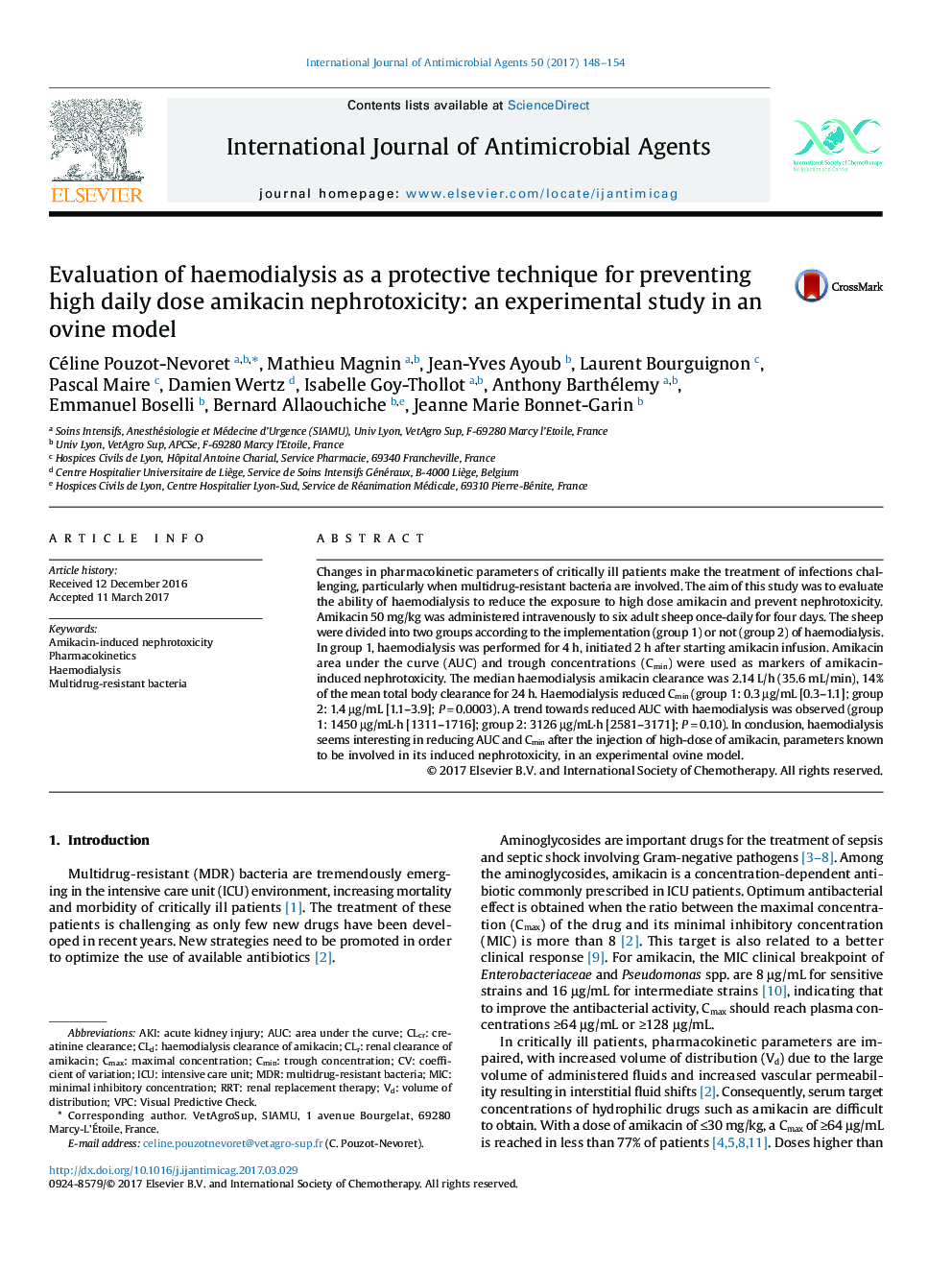| Article ID | Journal | Published Year | Pages | File Type |
|---|---|---|---|---|
| 5666933 | International Journal of Antimicrobial Agents | 2017 | 7 Pages |
â¢Haemodialysis is an optimized technique of antibiotic dosing and delivery after administration of high dose of amikacin.â¢Haemodialysis reduced Cmin and time of exposure to a concentration exceeding 2.5âµg/mL after administration of high dose of amikacin.â¢Higher amikacin dose associated with haemodialysis should be considered for intermediate resistance strains in ICU patient.
Changes in pharmacokinetic parameters of critically ill patients make the treatment of infections challenging, particularly when multidrug-resistant bacteria are involved. The aim of this study was to evaluate the ability of haemodialysis to reduce the exposure to high dose amikacin and prevent nephrotoxicity. Amikacin 50âmg/kg was administered intravenously to six adult sheep once-daily for four days. The sheep were divided into two groups according to the implementation (group 1) or not (group 2) of haemodialysis. In group 1, haemodialysis was performed for 4âh, initiated 2âh after starting amikacin infusion. Amikacin area under the curve (AUC) and trough concentrations (Cmin) were used as markers of amikacin-induced nephrotoxicity. The median haemodialysis amikacin clearance was 2.14âL/h (35.6âmL/min), 14% of the mean total body clearance for 24âh. Haemodialysis reduced Cmin (group 1: 0.3âµg/mL [0.3-1.1]; group 2: 1.4âµg/mL [1.1-3.9]; Pâ=â0.0003). A trend towards reduced AUC with haemodialysis was observed (group 1: 1450âµg/mLâ h [1311-1716]; group 2: 3126âµg/mLâ h [2581-3171]; Pâ=â0.10). In conclusion, haemodialysis seems interesting in reducing AUC and Cmin after the injection of high-dose of amikacin, parameters known to be involved in its induced nephrotoxicity, in an experimental ovine model.
